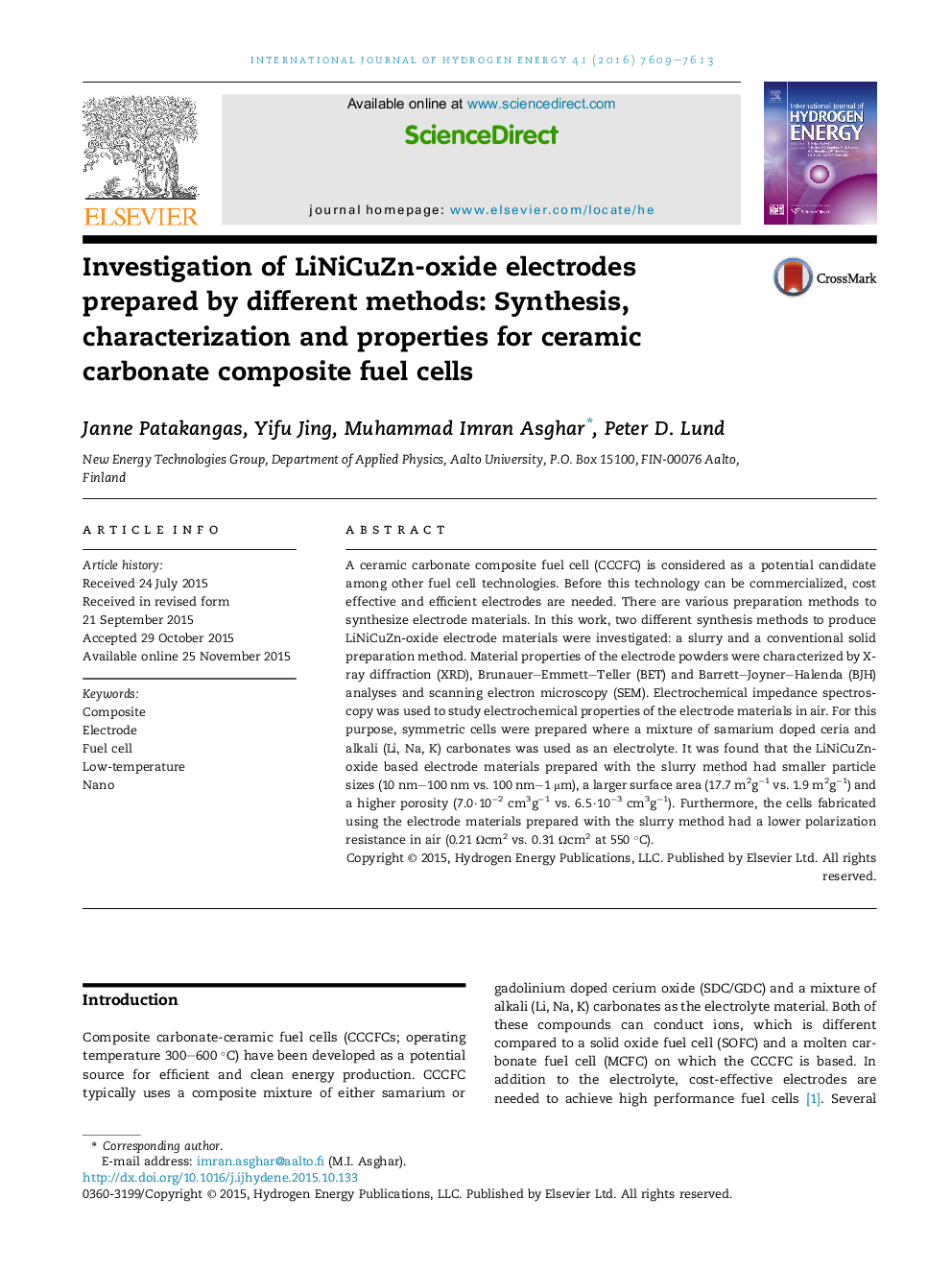| کد مقاله | کد نشریه | سال انتشار | مقاله انگلیسی | نسخه تمام متن |
|---|---|---|---|---|
| 1268717 | 1497407 | 2016 | 5 صفحه PDF | دانلود رایگان |
• A comparison between slurry and solid state methods was performed.
• Smaller sized electrode material particles can be obtained with the slurry method.
• Lower polarization resistances were achieved with the slurry method.
A ceramic carbonate composite fuel cell (CCCFC) is considered as a potential candidate among other fuel cell technologies. Before this technology can be commercialized, cost effective and efficient electrodes are needed. There are various preparation methods to synthesize electrode materials. In this work, two different synthesis methods to produce LiNiCuZn-oxide electrode materials were investigated: a slurry and a conventional solid preparation method. Material properties of the electrode powders were characterized by X-ray diffraction (XRD), Brunauer–Emmett–Teller (BET) and Barrett–Joyner–Halenda (BJH) analyses and scanning electron microscopy (SEM). Electrochemical impedance spectroscopy was used to study electrochemical properties of the electrode materials in air. For this purpose, symmetric cells were prepared where a mixture of samarium doped ceria and alkali (Li, Na, K) carbonates was used as an electrolyte. It was found that the LiNiCuZn-oxide based electrode materials prepared with the slurry method had smaller particle sizes (10 nm–100 nm vs. 100 nm–1 μm), a larger surface area (17.7 m2g−1 vs. 1.9 m2g−1) and a higher porosity (7.0·10−2 cm3g−1 vs. 6.5·10−3 cm3g−1). Furthermore, the cells fabricated using the electrode materials prepared with the slurry method had a lower polarization resistance in air (0.21 Ωcm2 vs. 0.31 Ωcm2 at 550 °C).
Journal: International Journal of Hydrogen Energy - Volume 41, Issue 18, 18 May 2016, Pages 7609–7613
